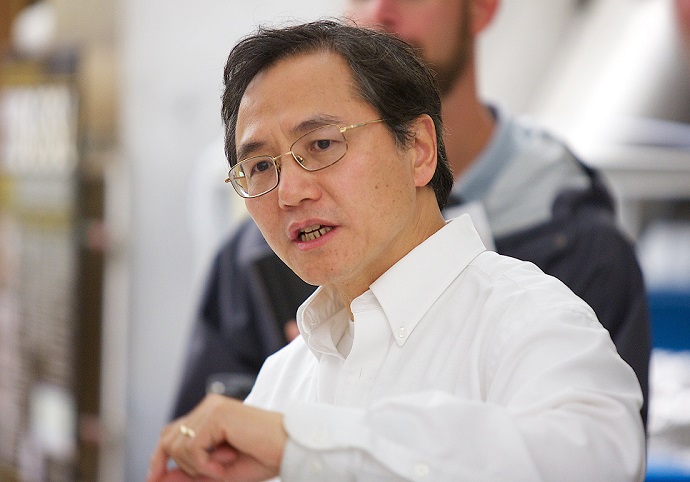Syracuse hosted the seventh International Building Physics Conference (IBPC2018) in September, gathering experts on the engineering, science and design of buildings from 33 countries. At the forefront of the three-day event was Jianshun “Jensen” Zhang, professor of mechanical and aerospace engineering in the College of Engineering and Computer Science. Zhang was recently named the chairman of the board of the International Association of Building Physics, after being confirmed by members during the conference.

Jianshun “Jensen” Zhang
IBPC2018 was organized by the Syracuse Center of Excellence (CoE), the College of Engineering and Computer Science and the School of Architecture.
Zhang, a world-renowned expert in building energy and environmental systems engineering and design, says the conference brought a great deal of visibility to the University. “Syracuse has a lot to offer. It was a good opportunity for us to show what capabilities we have, including the multi-disciplinary faculty expertise and the world-class research facilities.”
Zhang points out the unique role of the CoE, which fosters collaboration among many disciplines at the University. The conference drew more than 350 scientists, engineers, architects and Ph.D. students.
The theme of IBPC2018 was “Healthy, Intelligent, and Resilient Buildings and Urban Environments.” Its forums included presentations of original research and development work and findings, demonstrations and exhibitions of innovative green building technologies, and discussions of future challenges and opportunities.
Coinciding with the conference was a Ph.D. course sponsored by the International Association of Building Physics, where Zhang and Carsten Rode of the Danish Technical University and John Grunewald of Dresden University of Technology in Germany, presented lectures on modeling and measurement methods for coupled heat, air, moisture and pollutant transport and storage in buildings.
The course drew 20 students from the U.S., Canada and Europe. It included a forum and workshop on the CHAMPS (Combined Heat, Air, Moisture and Pollutant Simulations) software platform, which is a 15-year collaboration between the three countries along with the University of La Rochelle, France; the University of Tokyo, Japan; and Tsinghua University and Nanjing University, China. CHAMPS is used by researchers, engineers and architects.
“There were two purposes,” Zhang says. “The first was to teach state-of-the-art modeling in CHAMPS,” he said, which included lectures, labs and experiments. “The other was the opportunity for Ph.D. students in the field to exchange and discuss ideas. It was very nice and interesting to see their interactions, and some of which generated new research ideas and collaborative projects.”
Three major themes stand out for Zhang when reflecting on the entire conference. First was its breadth. Presentations and demonstrations ranged from the material level, nanoscale, to the room scale, to the building environment to urban scale, Zhang said. Second was the high quality of the presentations. “I was very impressed with the technical presentations,” Zhang says. “There was very good technical depth.” Third was the integration of different disciplines in exploring all aspects of buildings.
Increased multidisciplinary approaches to building are something Zhang has noted throughout his 30-year career. “You can see more architects who are interested in the performance of a building,” Zhang says. “And engineers are interested in form and how the buildings look.”
Looking forward, Zhang is excited about the most recent formation of the Syracuse University research clusters, one of which is Energy and Environment that encompasses healthy and intelligent buildings. The interdisciplinary research activities in the Energy and Environment cluster will no doubt further strengthen Syracuse University’s competitiveness in this important field.
